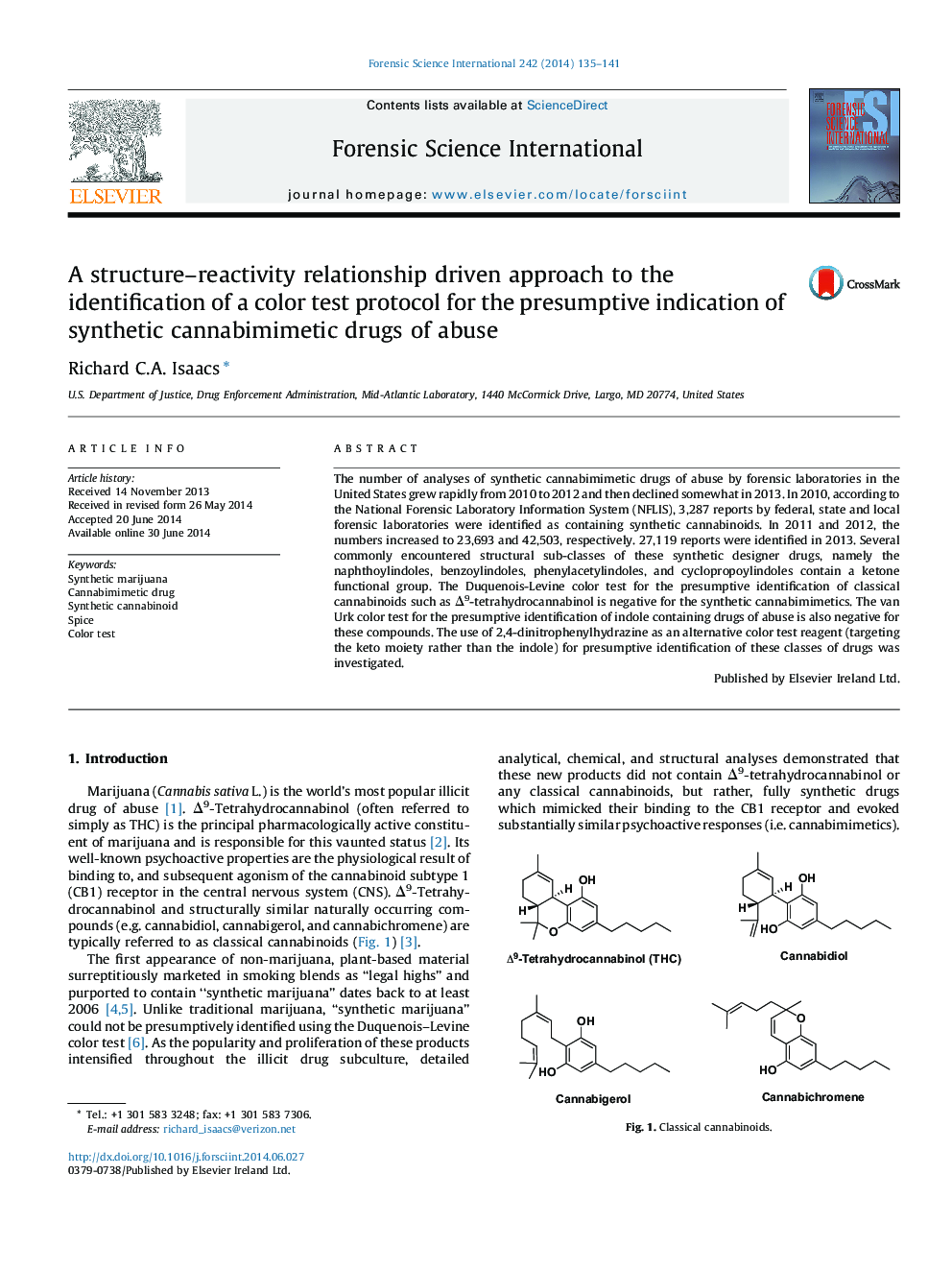| کد مقاله | کد نشریه | سال انتشار | مقاله انگلیسی | نسخه تمام متن |
|---|---|---|---|---|
| 95461 | 160432 | 2014 | 7 صفحه PDF | دانلود رایگان |
• Synthetic cannabimimetic drugs do not respond to the Duquenois–Levine color test.
• The lack of response was rationalized using structure and mechanistic principles.
• 2,4-Dinitrophenylhydrazine was investigated as an alternative color test reagent.
• The reactivity of 2,4-DNPH with cannabimimetics was correlated with structure.
• Naphthoyl, benzoyl, phenylacetyl and cycloalkoyl indoles were tested.
The number of analyses of synthetic cannabimimetic drugs of abuse by forensic laboratories in the United States grew rapidly from 2010 to 2012 and then declined somewhat in 2013. In 2010, according to the National Forensic Laboratory Information System (NFLIS), 3,287 reports by federal, state and local forensic laboratories were identified as containing synthetic cannabinoids. In 2011 and 2012, the numbers increased to 23,693 and 42,503, respectively. 27,119 reports were identified in 2013. Several commonly encountered structural sub-classes of these synthetic designer drugs, namely the naphthoylindoles, benzoylindoles, phenylacetylindoles, and cyclopropoylindoles contain a ketone functional group. The Duquenois-Levine color test for the presumptive identification of classical cannabinoids such as Δ9-tetrahydrocannabinol is negative for the synthetic cannabimimetics. The van Urk color test for the presumptive identification of indole containing drugs of abuse is also negative for these compounds. The use of 2,4-dinitrophenylhydrazine as an alternative color test reagent (targeting the keto moiety rather than the indole) for presumptive identification of these classes of drugs was investigated.
Journal: Forensic Science International - Volume 242, September 2014, Pages 135–141
